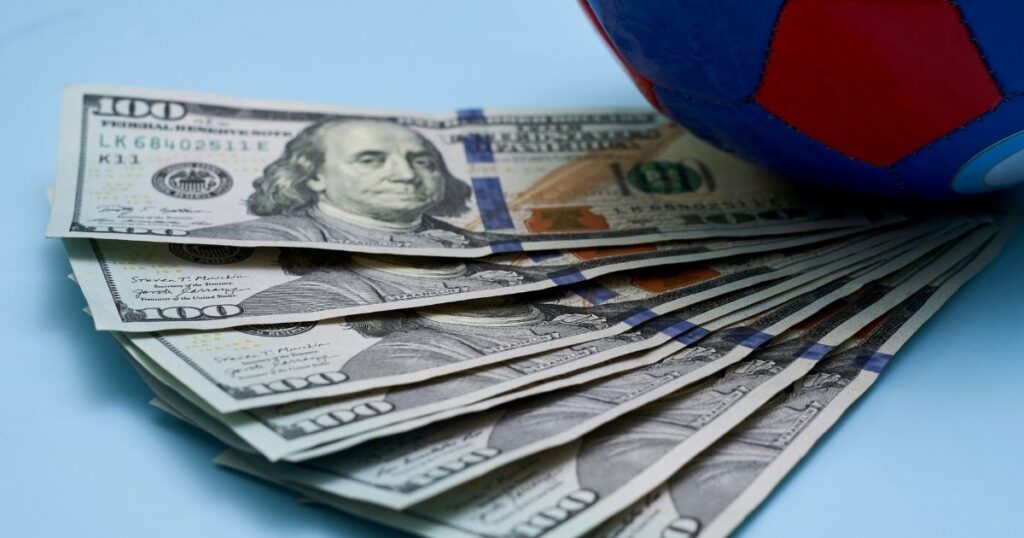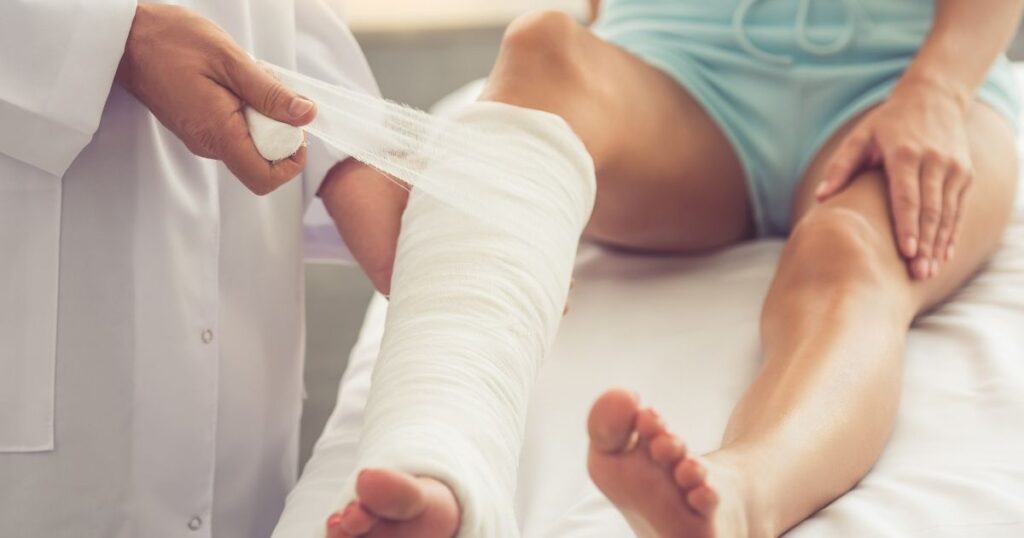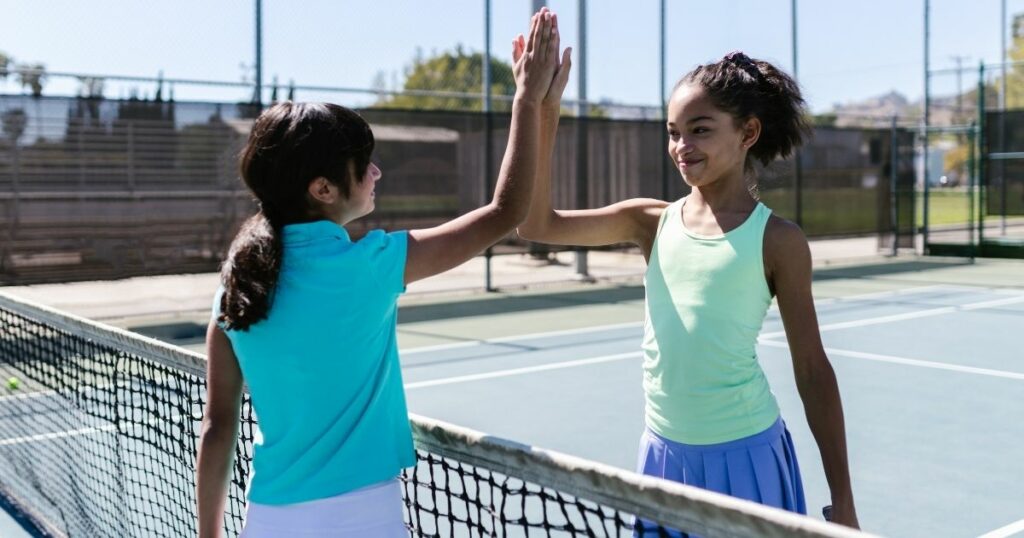Injuries In Sports: Long-Term Impact And Costs
From the thrill of competition to the heartache from a loss, every athlete on the field tries to push themselves mentally and physically. For myriad reasons, pushing these limits can have lifetime effects when those limits are pushed too far.
In this blog, we’ll cover the impacts and financial reality of what happens when athletes encounter injuries. This complex problem now begins even earlier, with children selecting a single-focus sport at younger and younger ages.

The Physical and Mental Toll of Sports Injuries
While some form of injury, big or small, is almost inevitable for athletes – the long-term impact and costs is something rarely considered when first getting involved on the field with an activity. The transition from a fun extracurricular activity to a serious and possibly scholarship-based sport for any athlete can sneak up on you, but the considerations and toll of an injury can be life-altering.
Most readers think of early childhood sports as a carefree scenario with happy kids engaging in their first competitions. Today’s reality may not coincide with the Leave it to Beaver version that many of us have in our heads.
Sports specialization has been creeping into younger and younger athletes. ‘Sports specialization’ is defined as “an intentional and focused participation in a single sport for 8 months or more per year.”
These effects are far-reaching and have multiple real-world problems.
Lessening Participation
The first problem is selecting a single sport at an increasingly young age actually leads to lessening participation across sports. This happens for two distinct reasons.
The first is burnout from the student-athletes. It’s estimated that 70% of single sport-focused athletes will drop out of that sport by age 13. Additionally, when athletes choose a specialization, they never have the opportunity to explore other sports for which they might have a passion.
These problems go hand-in-glove with the issue of advanced athletes.
Because athletes learn the skills to conquer a sport at a young age, it makes latter participation almost impossible. By encouraging athletes to be the best they can be as young as they can be, we close the door to more participation by novice athletes entering high school or beyond.
Advanced Injuries
The second looming problem is creating advanced injuries. There has been an increase of media coverage around Tommy Johns surgery for teens. This repetitive stress injury was something that previously was a part of MLB pitchers in their late careers. Now, it’s common for 35% of MLB pitchers and as of 2014, 67% of all Tommy Johns surgeries were performed on athletes 16-20 years old.
This touches on the specialization problem mentioned earlier. Because young athletes don’t have a secondary sport the possibility of repetitive stress injuries becomes much more likely at a younger age.
If pitchers, for example, were to take 3-4 months off from their promising sport and play basketball, Tommy Johns surgery for 16-20 year olds would be non-existent.

Lingering Effects:
Serious surgeries and serious injuries are increasingly common among younger and younger athletes because of the drive to perform at the top echelon of their sport.
Regardless of the injury, there are always lingering physical effects for players.
It has been reported that over $700,000,000 was spent on salaries for injured athletes in MLB in 2015, over $450,000,000 in the NFL, $350,000,000 in the NBA and $300,000,000 in the English Premier League but what is the true underlying cost of these injuries?
Many injuries, regardless if they are fixed or unresolved, can also turn into unexpected future issues. Post-traumatic osteoarthritis is caused by early life injuries. Because cartilage will strengthen from tears and impact, osteoarthritis is a very common lingering effect for all athletes.
Former NCAA athletes report a more limited range of motion, lower health-related quality of life surveys, and these scores go down over time.
The Mental & Emotional Strain:
Becoming less taboo is discussing the emotional strain that is placed on top-tier athletes. The heightened stress that athletes operate under in their day-to-day lives has been traced to developing affective disorders later in life.
A 2019 study found that 35% of elite athletes have mental health concerns. This can be a wide-ranging issue from the struggle to balance personal responsibilities with sports, to their relentless pursuit of perfection in their sports specialty.
Depression is the most common emotional issue surrounding athletes. There was a previous feeling that the endorphins produced by training and playing were a good barrier to depression. We now know that depression impacts athletes at all levels of play.
It’s estimated that 6.7% of the US population has struggled with depression in the previous 12-month period. That number is anywhere from 15-21% among college athletes. That same study found that athletes who had experienced an injury reported significantly higher levels of depression than non-injured athletes.
The Financial Reality
The research is deepening around the financial reality for NCAA athletes after they leave college. Chronic injuries surround former NCAA athletes at a significantly higher rate than recreational athletes.
Of course, many former college athletes continue to thrive physically after college. But for those with sustained injuries, there will be a long future of specialists, physical therapists, and ongoing care.
To understand the costs of athlete injuries, one study over four years in Florida found that youth sports-related injuries accounted for $55M in insurance and youth Medicare costs. And consider that’s just one state over four years.
Cost Of Sports Injury Doctor: Direct Costs
Sports injury costs can vary wildly from state to state and city to city. For 25- to 40-year-olds, a 2011 survey estimated average charges for a leg fracture were about $3,403, while the estimated average charges for an arm fracture were about $7,666.
In an exhaustive study, the estimated cost per year ranges from $446 million to $1.5 billion for college injuries. For high school, the range is $5.4 billion to $19.2 billion.
There is little data on costs not directly from the doctor’s office, but there is no stretch to put together that ongoing surgeries, rehabilitation, and ongoing medications are likely much higher than the initial treatments given. Additionally, many athletes run up against being underinsured or even uninsured.

The Long Run: Indirect Costs
There are high price tags for injuries later in life for an injured player. The highest indirect cost is that of missing a professional opportunity. Indeed, we’ve seen an increase of players in college refusing to make bowl appearances for their teams.
Lost income is the largest concern, but the hidden costs of adaptive equipment will quickly and far exceed the sticker price of a doctor’s visit. The cost of travel and specialized equipment can put a significant strain on any budget.
What Athletes Won’t Tell You About Life After a Sport Injury
One of the little talked-about aspects of injury is the pressure athletes feel to keep it a secret. The old-school feeling that you should ‘play through the pain’ has caused untold permanent damage for so many athletes.
The importance of receiving immediate care cannot be overstated. How quickly the initial injury can be resolved is one of the leading indicators for positive outcomes down the line. The pressure to finish a match, continue training, or keep an injury to yourself can create a lifetime of struggle.
Along that same line, skipping rehab is a common and dangerous idea. Athletes too often want to get back to regular training, back to the game, or back to their teammates. Because of this internal pressure, many athletes don’t complete the rigorous rehabilitation plans from the training.
Athletes will often ignore smaller concerns. Whether because there are multiple issues or that thinking the pain will go away, athletes often push through issues that will come back to haunt them later in life. Early diagnosis is the easiest way to prevent a future sports injury.
The Impact on Life Beyond Sports
Career & Education
Injuries have an impact on more than just a player’s performance on the field or court. When injuries occur, student-athletes are more likely to miss school and training days. A 2019 study found that grades are negatively affected by sports-related concussions.
While no comprehensive study of injured athlete graduation rates exists, the depression surrounding an injury has obvious negative effects on their schooling.
Relationships & Social Life
A 2010 study revealed that many students lack a support system when dealing with an injury. This same study found that female athletes struggled more than their male counterparts to find the emotional and social support they needed in dealing with an injury.
The NCAA did an exhaustive study of the effects of injury on college athletes and even dove into how injuries can lead to increased use of alcohol and illegal drugs to cope on campus. Their findings are the most complete to date on the struggle student-athletes face across campuses.
Any change in physical capabilities for the population at large has negative impacts on social engagement, physical activity, and feelings of isolation. These can be made doubly difficult to deal with in a collegiate setting.

The Importance of Prevention & Proactive Care:
The importance of prevention and listening to medical professionals cannot be overstated. So often the drive to get back to work with teammates has student-athletes choosing to curb the amount of advice they take from their training staff. Ignoring rehab recommendations is also more prevalent in younger athletes rather than their professional counterparts.
This can also be impacted by the information the athletes receive from the coaching and training staff and is further impacted by the importance of the upcoming match.
It is crucial for athletes to heed professional guidance and for the training staff to make medical recommendations based on the athlete and not on the pressure to win.
The Reality Of Injuries in Sports
The pressing reality of college athletes and the financial burden they bear has caught the attention of the US Senate as the NCAA struggles to catch up to a changing landscape of financial responsibilities in a post-NIL (Name, Image, and Likeness) world.
The full scope of injuries and the lives of athletes post-injury is being actively studied by the National Institute for Health (NIH) and the NCAA. The reality and full scope of these impacts may not be known immediately.
NGF Treats Even The Worst Sports Injury
This is where the Nebraska Greats Foundation comes in. So many athletes have nowhere to turn to afford the sports-related care they need. Our team of medical experts evaluates the requests that come in and the Nebraska Greats Foundation will step in to assist.
Many of these athletes cannot find the financing or empowerment they need to achieve their dreams without sacrificing their health. We at the Nebraska Greats Foundation want to change that.
How to Apply
In the world of college sports, injuries are practically ubiquitous. Whether it’s torn ligaments, broken bones, or nagging chronic pain, recovery can often come at a steep price. It can be an incredibly daunting situation for athletes without the financial resources to pay for medical treatment.
Pride can also get in the way of these athletes asking for the help they need, which means one of the most thoughtful things you can do is refer athletes you know need medical care and assistance.
In addition, the injuries do not need to stem directly from their playing days. We have helped many people whose medical needs began decades after their playing days ended. Our team will contact the athlete directly and work with them to find a solution that works for their health and budget.
If you or an athlete you know is struggling with the long-term effects of a sports injury, reach out to the Nebraska Greats Foundation. We offer resources and support to help you navigate the challenges and reclaim your future.

